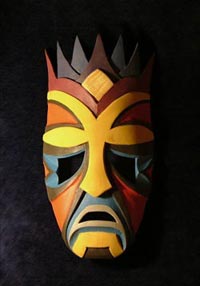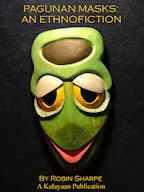The other theory, which I feel is a bit far fetched, is that they were a device created by a secret anti-church, anti-colonial organization. They claim that the masks were only worn on certain occasions and that the identity of the wearer who conveyed subversive messages was never known. There are, however, no authenticated reports of the masks being worn during public performances, but this does not mean that they never were. It is also claimed that the reason Schwartz does not say much about these masks is because he was privy to their secret purpose. It is known that privately Schwartz held strong anti-clerical and anti-colonial views, and supported libertinage.

